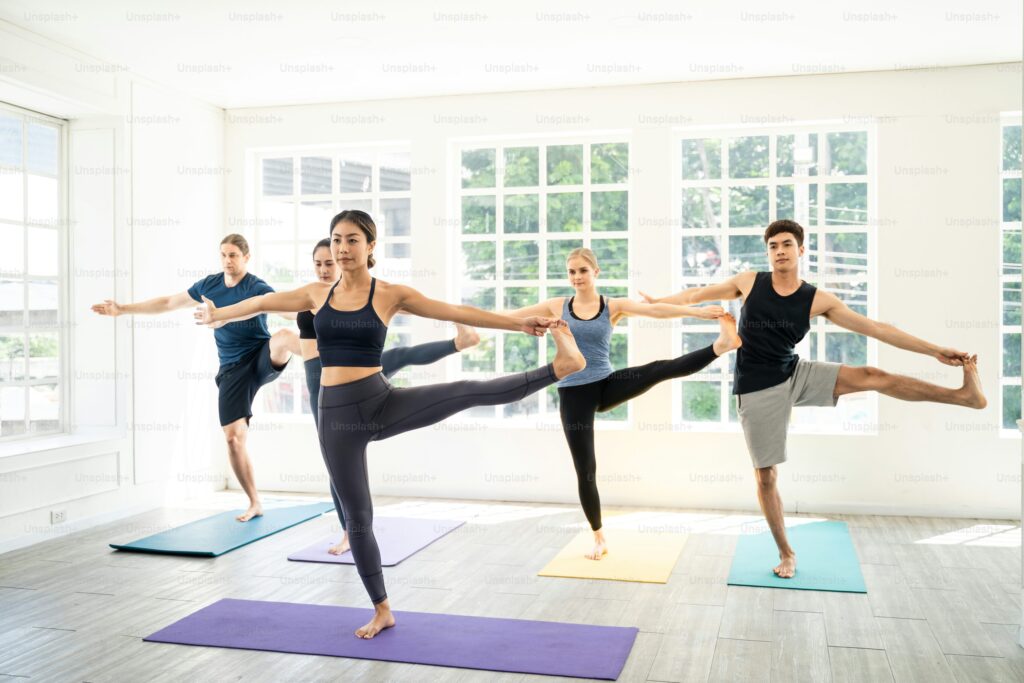Yoga is a powerful practice that brings individuals together, both physically and mentally. Group yoga, in particular, offers a unique opportunity to connect with others, build trust, and enhance your practice in ways you may not achieve alone. Whether you’re new to yoga or a seasoned yogi, group yoga poses can amplify the sense of unity and challenge you in fun, supportive ways.
In this article, we’ll explore some of the best group yoga poses, their benefits, and how practicing together fosters a deeper connection between participants.
What Are Group Yoga Poses?
Group yoga poses involve two or more people working together to achieve different postures. These poses promote teamwork, improve communication, and often require participants to balance or counterbalance each other. The beauty of group yoga lies in its ability to build trust and help practitioners step outside their comfort zone.
Group yoga poses are great for bonding experiences, whether in a class setting, a family gathering, or with friends. They also add an element of playfulness and cooperation, which can enhance both mental and physical well-being.
Benefits of Practicing Group Yoga Poses
Practicing yoga in a group offers many unique benefits:
- Enhanced Connection: Engaging in partner or group yoga requires communication and trust. This can deepen relationships and create a sense of unity.
- Mutual Support: Group yoga poses often involve supporting each other’s weight, helping participants experience a deeper stretch and maintain balance.
- Improved Focus: Practicing with others enhances your ability to stay present and engaged in the moment.
- Fun and Social Interaction: Yoga is usually a solo practice, but with group yoga, it becomes an enjoyable and social experience.
Top Group Yoga Poses to Try
1. Double Downward Dog (Partner Downward Dog)
One of the most popular group yoga poses is Double Downward Dog. It’s a fun variation of the traditional pose where two people align themselves in a stacked position. One person takes the traditional Downward Dog pose, while the second person places their hands near the first person’s hands and their feet on the lower back of the first person.
This pose stretches the back and hamstrings while building strength in the arms and core for both participants.
2. Double Boat Pose (Partner Navasana)
The Double Boat Pose strengthens your core and requires balance and coordination between both participants. Sitting opposite one another, each partner lifts their legs, pressing the soles of their feet together while holding hands for support. This posture engages the abdominal muscles and promotes concentration.
3. Flying Warrior Pose
Flying Warrior is an acro yoga pose, a style of yoga that involves one person acting as the “base” and the other as the “flyer.” In this pose, the base lies on their back and lifts the flyer using their feet. The flyer maintains a warrior-like pose in the air, stretching out their arms and extending one leg behind them. It requires both partners to work in harmony and trust each other completely.
4. Double Tree Pose (Partner Vrksasana)
The Double Tree Pose is another excellent way to enhance balance and coordination. Standing side by side, each person places their inner foot on the opposite leg, then wraps their arms around each other for support. This pose encourages grounding while building trust between partners.
5. Seated Forward Bend and Backbend
This is a simple but effective group yoga pose where one partner performs a forward bend, and the other performs a gentle backbend, using the partner for support. It’s a great way to deepen stretches while fostering cooperation.
Tips for Practicing Group Yoga
- Communicate Openly: Communication is essential in group yoga poses. Always check in with your partner to ensure both of you are comfortable and safe in each posture.
- Go Slow: Group yoga poses can be more challenging than individual postures, so take your time. Focus on alignment and balance before attempting more advanced poses.
- Focus on Trust: Trust is the foundation of any successful group yoga session. Be supportive of your partner and be willing to rely on them as well.
- Have Fun: Don’t be afraid to laugh and enjoy the process! Group yoga poses often bring a sense of playfulness to the practice.
Conclusion
Practicing group yoga poses is a wonderful way to build connection, improve flexibility, and enhance balance. Whether you’re practicing with a friend, family member, or fellow yogi, these poses will help deepen your yoga experience while fostering trust and communication. Plus, the shared energy of practicing together can be incredibly rewarding. So next time you hit the mat, grab a partner and explore the world of group yoga!
Read More: Yoga Mat Accessories – What Are The Main Features That You Should Look For?
